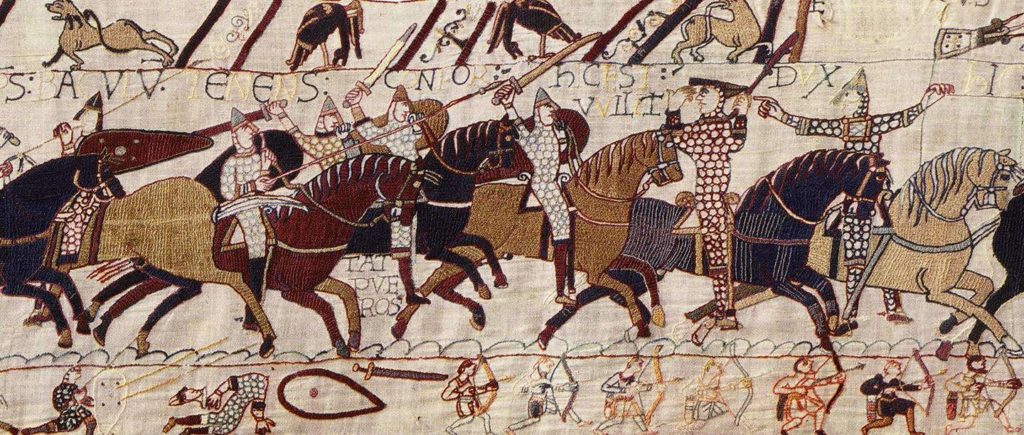Who fought the Battle of Hastings?
Battle of Hastings was fought between Harold II of England and William, the Conqueror, also known as the Duke of Normandy. Harold II had seized the throne of William the Conqueror, who was proclaimed as the rightful heir to the throne. This battle was fought on October 14, 1066, and ended with Harold being defeated.
The history behind the Battle of Hastings
Harold’s predecessor, Edward the Confessor was childless. He had decided that William, who was his cousin would take over the throne after him. Edward had breached his contract with Godwin and then decided about his successor. After the death of Edward, Godwon’s son, Harold became the Earl of Wessex after his father, gained favour from the people of the kingdom, especially the noblemen and the clergy, and consolidated as much power as he could. While Harold had sworn the oath of fealty to William, Edward, on his deathbed, granted the kingdom to Harold who was crowned the King the next day.

Details of the Battle of Hastings
With the help of his father-in-law, Baldwin V of Flanders and Geoffrey III, Count of Anjou, Harold was distracted by their rebellion. At this time, William garnered supporters with the Pope being one of them. With the Normans behind him, William went on to claim his right to the English throne.
Harold moved his fleet along the Hampshire, Sussex and Kentish coasts. they were there for a few months, guarding the English Coasts. Due to the long time at sea, there was a shortage of supplies and the fleet turned back to replenish their stock. Many seamen tweet lost during the voyage on the English Channel and it was kept open. tis made the country vulnerable to attacks.
Among these were Harald III, King of Norway, who also wanted to lay claim on the English throne allied with Harold’s outlawed brother, Tostig and entered the kingdom. Many of Harald’s men died and many more were severely injured. King Harold, upon hearing of this invasion went with his men, destroyed Harald’s and Tostig’s army and ultimately killed them.
During this time, William the Conquerer took advantage of Harold’s distraction, entered England with no opposition with an army 4000 to 7000 cavalry and infantry. He quickly moved to Hastings where the ultimate battle took place. Harold then took his overworked men to Hastings from York. To make for for this, he also recruited peasants who did not know warfare and were untrained. This was an unsuccessful strategy.
On October 14, William and Harold’s army met . Harold’s army lacked archers and cavalry. Nevertheless, they had to stand their ground against William’s army which gave a surprise attack. They stood on the summit which protected them. The slope gave William’s army easy access and enabled their approach to Harold’s army which formed a shield to protect themselves.
William’s cavalry kept charging at Harold’s army throughout the day. This weakened Harold’s forces. According to a tapestry painting known as Bayeux Tapestry, Harold was killed late in the afternoon when his was struck by an arrow in the eye. Towards the end of the day, Harold’s forces which was still fighting retreated and William the Conquerer won the battle.
He was crowned the King of England and was also known as William I.

